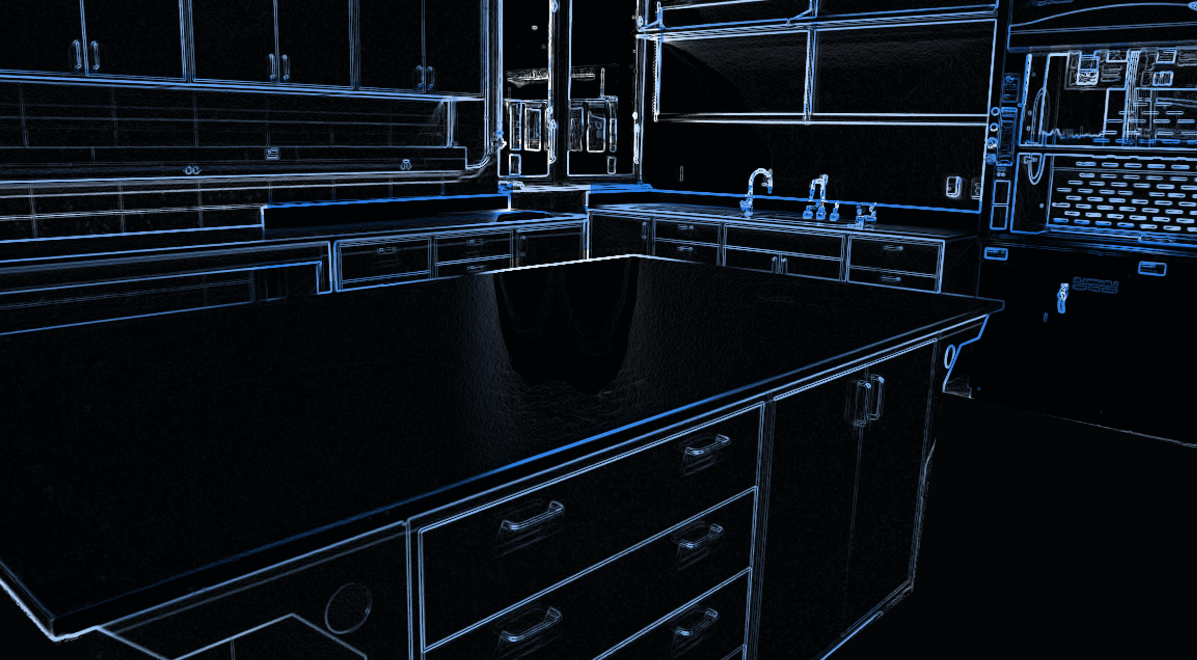
10 of the Greatest Discoveries Made in a Lab
When you ponder about what takes place inside of a science lab, it’s easy to allow your imagination to run wild. For centuries, scientists have crafted some of the most essential and life-altering — and often times, life-saving — creations atop chemtops and industrial lab tables, from X-Rays to Insulin to the transistor seemingly countless others; many of which came into existence accidentally. While it’s certainly true that some of the greatest creations in history came courtesy of some creativity inside of a science lab and atop chemistry lab tables across the globe, so too did many of the day-to-day items we often overlook and under-appreciate.
Corn Flakes
That big bowl of Corn Flakes cereal you often begin your day with? Yeah, those came to be more than an entire century ago in a science lab. At the tail end of the 1800s, the Kellogg’s name you now see brandished on cereal box after cereal box belonged to John Kellogg, who was simply a medical superintendent at the Battle Creek Sanitarium, working with his brother William to concoct a diet for the facility’s patients.
When the wheat was left cooking too long, however, the dough became flakey when rolled, and with some tweaking and ingredient adjusting from wheat to corn, the cereal you now know as Corn Flakes came to be. Courtesy of that simple recipe error and the subsequent tweaking in a science lab, the Kellogg’s brand now provides food to more than 180 countries across the globe.
Coca-Cola
One of the most renowned brands in the soda industry wasn’t supposed to be. Coca-Cola, at least as pharmacist John Pemberton invented it, was merely a crafty combination, primarily consisting of coca leaves and cola nuts, aimed to serve as an ailment for headaches. Simply set out to satisfy those suffering from headaches, Pemberton’s product took entirely new life in the science lab one day, as his assistant accidentally introduced carbonated water to the concoction and voila; the very first Coke was born.
Though the plan in place wasn’t to spontaneously produce a soda pop empire — one Pemberton didn’t get to see blossom, in any case, as he passed just years later — one of the many ingredients in Coke’s secret recipe, caffeine, can actually help with headaches; satisfying the entire purpose of the product in the first place.
Safety Glass
Stroll about an auto-body lot one afternoon and odds are, you’ll come across a number of vehicles with cracked, web-like windshields. You wonder to yourself, ‘why aren’t these glass windshields shattered, but merely cracked and distorted?’ Well, the world and all those wandering throughout it on wheels have French scientist Edouard Benedictus to thank for such a revolutionary discovery.
At the front end of the 20th Century in 1903, Benedictus dropped a glass flask filled with a solution of cellulose nitrate and liquid plastic. As one could come to expect when a glass it dropped, the flask broke, yet didn’t shatter. Rather, the shape of the flask remained intact, bringing Benedictus to the realization that the plastic coating was the cause. What took place by chance in that science lab more than a century ago is now utilized for car windshields and safety glasses, among numerous others.
Viagra
Throughout the past two decades, the magic medicine affectionately referred to as the “little blue pill” has saved the sex life of seemingly countless men across America and beyond. However, when the British-based pharmaceutical company Pfizer set up shop in their pharmaceutical labs, the plan in place wasn’t to rejuvenate erections. What’s now world-renowned as Viagra was once dubbed as UK92480, and its purpose was to provide relief for Angina Pectoris, or in simple terms, spasms in the heart’s coronary arteries. Sildenafil, the active ingredient in Viagra, failed in that regard, but its side effects solved a major issue for many men. Ironically, though, as noted by Alvin Ward of Mental Floss, a side effect of the little blue pill that was originally planned to help with heart attacks is, well, heart attacks.
Vulcanized Rubber
It must have been fate for rubber to meet the road because, well, that certainly wasn’t the goal Charles Goodyear had in mind when he manufactured his revolutionary vulcanized rubber. Decades before the first car was introduced, Goodyear’s aspirations were as simple as supplying a more durable, waterproof shoe to sustain extreme heat and cold. After years of trial and error experimentation, he crafted a concoction of natural rubber, sulphur, and nitric acid, which was only introduced to remove the color and later trashed before Goodyear realized the rubber was now harder, smoother, and drier than previous options.
But even then, as the story goes, it wasn’t until Goodyear’s un-gaudy creation accidentally fell onto a hot stove that he came away with the leathery, heat-resistant rubber he longed for. Goodyear didn’t live long enough to see his creation and namesake blossom into a leader in the tire and rubber industry nearly 40 years later, but his sensational scientific efforts can still be seen today, servicing cars, trucks, and much more.
Post-It Notes
At one point or another, you’ve likely found yourself hunkered down at a school workbench; Post-It Notes plastered all around your laboratory table as you plot your next attempt at scientific conquest. If this setting sounds familiar, say a quick thanks to Dr. Spencer Silver. Half a century ago, in an attempt to develop a strong adhesive, Silver felt short of his original intention, but instead, came away with a weaker, repositionable adhesive. After Silver later connected with another 3M scientist seeking a simple adhesive bookmark, the Post-It Notes you’ll often see scattered across ESD workbenches was born.
Microwave
Could you imagine a world in which one couldn’t cook a hot meal in a matter of minutes? Courtesy of some creativity in a science lab and a mere chance, that’s not the world we’ve lived in for more than a half-century now. In the mid-1940s, American engineer Percy Spencer, who was at the time working for the Raytheon Corporation, walked in front of a magnetron and noticed something peculiar take place: the chocolate bar in Spencer’s pocket had melted.
Upon realizing that the microwaves that radiated from the magnetron tubes were the cause of his melted chocolate, Spencer followed his aha moment with a few more (successful) experiments, and by October of 1945, he filed for a patent for his microwave. Interestingly enough, though, as noted by Science Alert, Spencer’s first microwave was 5’6” and weighed approximately 750 pounds. It wasn’t until 20-plus years after the microwaves’ introduction that the compact, household appliance we now rely upon ever-so-faithfully found its way into stores.
Batteries
One could say batteries are the lifeblood of electronics, and batteries sprang to life in a science lab centuries ago — as medieval as that lab may have been. Flashback to the late 1700s; a historic era in which Italian Luigi Galvani discovered that touching two pieces of metal to a frog’s legs would force the frog to twitch. After then crafting a crude circuit and introducing his creation to Alessandro Volta, the idea to modify the circuits into cells and then stack said cells sprang to mind and boom, the battery was born. Those batteries now serve as the lifeblood of everyday electronics and as you know, are actively utilized in science labs across the globe.
Plastic
It seems likely that few scientific discoveries are taken for granted in everyday life as profoundly as plastic. It’s one of those things the world wouldn’t be the same without, though its presence is almost subtle and overlooked. The little luxury we now know as plastic can be found in bulk in your cupboards, in the form of the water bottle sitting off to the side of your industrial worktable, and seemingly everywhere else, and we have Belgian chemist Leo Baekeland to thank for it. More than an entire century ago, in pursuit of a replacement for shellac, Baekeland concocted a combination of formaldehyde and phenol, in addition to a few other materials, and out came the non-conductive, heat-resistant Polymer we now know to be plastic.
Pacemaker
You know that tiny, titanium pacemaker that helps hearts pump as they should? Such a significant, life-altering scientific discovery took place only by mere mishap but has since served as a helping hand to seemingly countless hearts. Flashback to the late 1950s; a time in which Wilson Greatbatch accidentally inserted the wrong-sized resistor into a heart rhythm recording device he was developing. The result of Greatbatch mistakenly reaching for the wrong-sized resistor was that the oscillator began to give off an electrical pulse; one resemblant of a heartbeat.
Intrigued at the idea that this electrical stimulation could potentially not only replicate, but regulate a human heartbeat, Greatbatch devised a plan to shrink his device, and with much success. By May of 1958, Greatbatch’s then-modernized touch on a pacemaker was inserted into a dog, and when that, too, was done with success, the health of the human heart received help previously unprecedented, as pacemakers were, prior to this point, the size of a television set.
Lifestyles made from labs
Could you imagine a life without a chilled glass of Coca-Cola, or the convenience of a microwave, or the often-overlooked necessity that is batteries or vulcanized rubber for tires? Thanks to the abundance of craftiness, creativity, and a bit of luck that takes place inside of science labs across the world, you don’t have to. And OnePointe Solutions is aiming to ensure the science labs in which those life-changing creations come to be are second to none.
Throughout the past 10-plus years, OnePointe Solutions has blossomed into the nation’s bona fide leader for custom lab furniture, solidifying the Austin-based laboratories furniture manufacturer as the go-to source for science lab seekers. With OnePointe Solutions at your service, you’ll step into a state-of-the-art science lab stocked with any and every science essential, as our expertise ranges from industrial packing stations to custom work tables to lab benches and any and everything in between. Custom workbenches and esd countertops can also be crafted to your exact specification.
When you consider the seemingly countless benefits that a state-of-the-art science lab can provide the scientific community, and thus, society with, you have to ask yourself one simple question: why wouldn’t you want OnePointe Solutions to work for you?
Fortunately for science, there’s a simple answer with one call to the fine folks at OnePointe Solutions at (866) 390-3383. We take high quality laboratory design very seriously.


